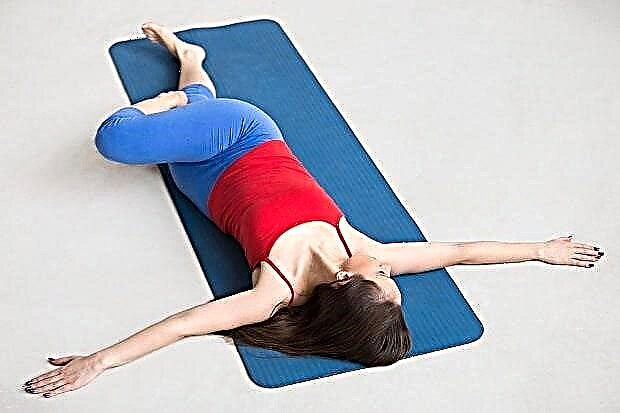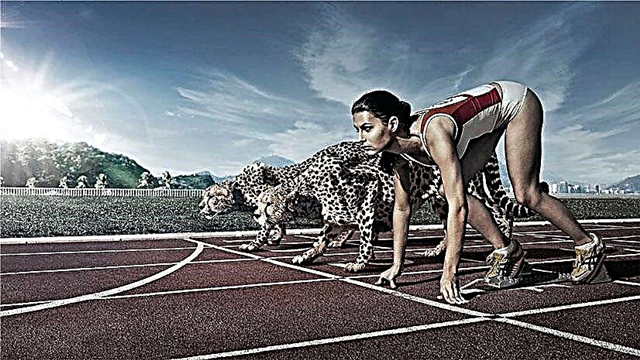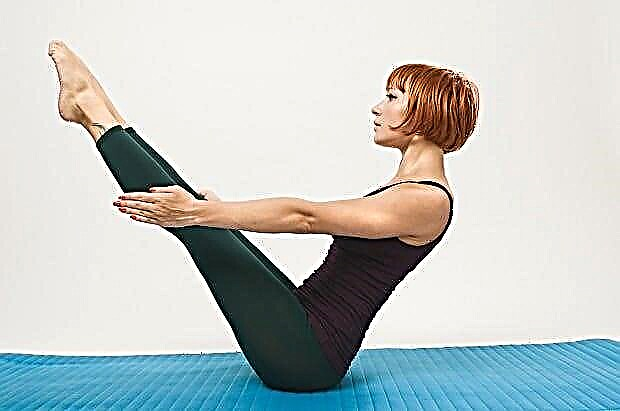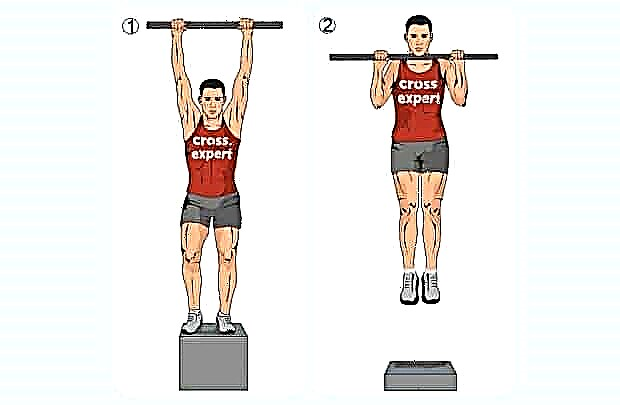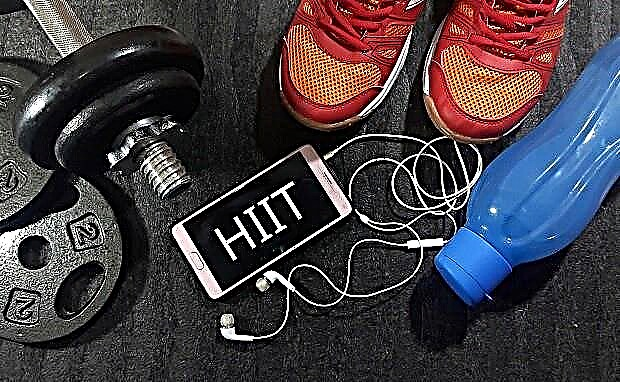It is the world's first global running analysis. It covers results 107.9 million races and over 70 thousand sportsconducted from 1986 to 2018. So far, this is the largest study of running performance ever. KeepRun translated and published the entire study, you can study the original on the RunRepeat website at this link.

Key findings
- The number of participants in running competitions decreased by 13% compared to 2016. Then the number of people crossing the finish line was a historic maximum: 9.1 million. However, in Asia, the number of runners continues to grow to this day.
- People run slower than ever. Especially men. In 1986, the average finish time was 3:52:35, while today it is 4:32:49. This is a difference of 40 minutes 14 seconds.
- Modern runners are the oldest. In 1986, their average age was 35.2 years, and in 2018 - 39.3 years.
- Amateur runners from Spain run the marathon faster than others, the Russians run the half marathon the best, and the Swiss and Ukrainians are the leaders in the 10 and 5 km distances, respectively.
- For the first time in history, the number of female runners exceeded the number of men. In 2018, women accounted for 50.24% of all competitors.
- Today, more than ever, people travel to other countries to compete.
- The motivation for participating in competitions has changed. Now people are more concerned not with athletic performance, but with physical, social or psychological motives. This partly explains why people have started traveling more, started running slower, and why the number of people who want to celebrate the achievement of a certain age milestone (30, 40, 50) today is less than 15 and 30 years ago.
If you want to compare your results with other runners, there is a handy calculator for this.
Research data and methodology
- The data covers 96% of competition results in the US, 91% of results in Europe, Canada and Australia, as well as most of Asia, Africa and South America.
- Professional runners are excluded from this analysis as it is dedicated to amateurs.
- Walking and charity running were excluded from the analysis, as were steeplechase and other unconventional running.
- The analysis covers 193 countries officially recognized by the UN.
- The study was supported by the International Association of Athletics Federations (IAAF) and was presented in China in June 2019.
- Data was collected from competition results databases as well as from individual athletics federations and competition organizers.
- In total, the analysis included the results of 107.9 million races and 70 thousand competitions.
- The chronological period of the study is from 1986 to 2018.
Dynamics of the number of participants in running competitions
Running is one of the most popular sports and has many fans. But, as the graph below shows, over the past 2 years, the number of participants in cross-country competitions has dropped significantly. This mainly applies to Europe and the United States. At the same time, running is gaining popularity in Asia, but not fast enough to compensate for the lag in the West.
The historical peak was in 2016. Then there were 9.1 million runners worldwide. By 2018, that number had dropped to 7.9 million (i.e., down 13%). If you look at the dynamics of change over the past 10 years, then the total number of runners has grown by 57.8% (from 5 to 7.9 million people).
The total number of participants in the competition

The most popular are the 5 km distance and half marathons (in 2018, 2.1 and 2.9 million people ran them, respectively). However, over the past 2 years, the number of participants in these disciplines has decreased the most. Half-marathon runners decreased by 25%, and 5 km run became less frequent by 13%.
The 10 km distance and marathons have fewer followers - in 2018 there were 1.8 and 1.1 million participants. However, over the past 2-3 years this number has practically not changed and fluctuated within 2%.
Dynamics of the number of runners at different distances

There is no exact explanation for the decline in running popularity. But here are some possible hypotheses:
- Over the past 10 years, the number of runners has increased by 57%, which is impressive in itself. But, as is often the case, after a sport gains a sufficient following, it goes through a period of decline. It is difficult to say whether this period will be long or short. Anyway, the running industry needs to keep this trend in mind.
- As a sport becomes popular, several niche disciplines emerge within it. The same thing happened with running. Even 10 years ago, the marathon was a lifelong goal for many athletes, and very few could achieve it. Then less experienced runners began to participate in the marathon. This confirmed that this test is within the power of amateurs. There was a fashion for running, and at some point extreme athletes realized that the marathon was no longer so extreme. They no longer felt special, which for many is one of the most important aspects of participating in a marathon. As a result, the ultramarathon, trail running and triathlon appeared.
- The motivation of the runners has changed, and the competition has not yet had time to adapt to this. Several indicators indicate this. This analysis proves that: 1) In 2019, people attach much less importance to age milestones (30, 40, 50, 60 years) than 15 years ago, and therefore celebrate the anniversary less often by participating in a marathon, 2) People are more likely to travel to participate in competitions and 3) The average finish time has increased significantly. And this does not apply to individuals, but to all participants in the competition on average. The very "demography" of the marathon has changed - now more slow runners participate in it. These three points indicate that participants now value experiences more than athletic performance. This is a very important point, but the running industry has not been able to change in time to meet the spirit of the times.
This raises the question of what people prefer more often - large or small competitions. A "large" race is considered if more than 5 thousand people participate in it.
The analysis showed that the percentage of participants in large and small events is about the same: large events attract 14% more runners than small ones.
At the same time, the dynamics of the number of runners in both cases is practically the same. The number of participants in large competitions grew until 2015, and small - until 2016. However, today small races are losing popularity faster - since 2016, there has been a 13% decline. Meanwhile, the number of participants in major marathons fell by 9%.
Total number of competitors

When people talk about running competitions, they usually mean marathons. But in recent years, marathons cover only 12% of all participants in the competition (at the beginning of the century this figure was 25%). Instead of full distance, more and more people today prefer half marathons. Since 2001, the proportion of half marathon runners has grown from 17% to 30%.
Over the years, the percentage of participants in the 5 and 10 km races has remained virtually unchanged. For 5 kilometers, the indicator fluctuated within 3%, and for 10 kilometers - within 5%.
Distribution of participants between different distances

Finish time dynamics
Marathon
The world is gradually slowing down. However, since 2001, this process has become much less pronounced. Between 1986 and 2001, the average marathon speed increased from 3:52:35 to 4:28:56 (that is, by 15%). At the same time, since 2001, this indicator has grown by only 4 minutes (or 1.4%) and amounted to 4:32:49.
Global finish time dynamics

If you look at the dynamics of the finish time for men and women, you can see that men are steadily slowing down (although the changes have been insignificant since 2001). Between 1986 and 2001, the average finish time for men increased by 27 minutes, from 3:48:15 to 4:15:13 (representing a 10.8% increase). After that, the indicator rose by only 7 minutes (or 3%).
On the other hand, women initially slowed down more than men. From 1986 to 2001, the average finish time for women increased from 4:18:00 am to 4:56:18 pm (up 38 minutes or 14.8%). But with the beginning of the 21st century, the trend changed and women started to run faster. From 2001 to 2018, the average improved by 4 minutes (or 1.3%).
Finish time dynamics for women and men

Finish time dynamics for different distances
For all other distances, there is a steady increase in the average finish time for men and women. Only women managed to overcome the trend and only in the marathon.
Finish Time Dynamics - Marathon

Finish time dynamics - half marathon

Finish time dynamics - 10 kilometers

Finish time dynamics - 5 kilometers

The relationship between distance and pace
If you look at the average running pace for all 4 distances, it is immediately striking that people of all ages and genders perform best in a half marathon. Participants complete the half marathon at a much higher average speed than other distances.
For a half marathon, the average pace is 1 km in 5:40 minutes for men and 1 km in 6:22 minutes for women.
For a marathon, the average pace is 1 km in 6:43 minutes for men (18% slower than half marathon) and 1 km in 6:22 minutes for women (17% slower than half marathon).
For a 10 km distance, the average pace is 1 km in 5:51 minutes for men (3% slower than half marathon) and 1 km in 6:58 minutes for women (9% slower than half marathon) ...
For a distance of 5 km, the average pace is 1 km in 7:04 minutes for men (25% slower than half marathon) and 1 km in 8:18 minutes for women (30% slower than half marathon) ...
Average pace - women

Average pace - men

This difference can be explained by the fact that the half marathon is more popular than other distances. Therefore, it is possible that a large number of good marathon runners have switched to a half marathon, or they are running both a marathon and a half marathon.
The 5 km distance is the "slowest" distance, as it is best suited for beginners and seniors. As a result, a lot of beginners participate in 5K races who do not set themselves the goal of showing the best results.
Finish time by country
Most runners live in the United States. But among the other countries with the most runners, American runners have always been the slowest.
Meanwhile, since 2002, marathon runners from Spain have consistently overtaken everyone else.
Finish time dynamics by country

Click on the drop-down lists below to see the speed of representatives of different countries at different distances:
Finish time by country - 5 km
Fastest nations at a distance of 5 km
Quite unexpectedly, although Spain bypasses all other countries in the marathon distance, it is one of the slowest at a distance of 5 km. The fastest countries at a distance of 5 kilometers are Ukraine, Hungary and Switzerland. At the same time, Switzerland takes the third place at a distance of 5 km, first place at a distance of 10 km, and second place in the marathon. This makes the Swiss some of the best runners in the world.
Rating of indicators for 5 km

Looking at the results for men and women separately, Spanish male athletes are some of the fastest on the 5 km distance. However, there are far fewer of them than women runners, so the result of Spain in the overall standings is poor. In general, the fastest 5 km men live in Ukraine (on average they run this distance in 25 minutes 8 seconds), Spain (25 minutes 9 seconds) and Switzerland (25 minutes 13 seconds).
Rating of indicators for 5 km - men

The slowest men in this discipline are Filipinos (42 minutes 15 seconds), New Zealanders (43 minutes 29 seconds) and Thais (50 minutes 46 seconds).
As for the fastest women, they are Ukrainian (29 minutes 26 seconds), Hungarian (29 minutes 28 seconds) and Austrian (31 minutes 8 seconds). At the same time, Ukrainian women run 5 km faster than men from 19 countries in the list above.
Rating of indicators for 5 km - women

As you can see, the Spanish women are the second fastest running at a distance of 5 km. Similar results are shown by New Zealand, the Philippines and Thailand.
In recent years, some countries have significantly improved their performance, while others have dropped to the bottom of the ranking table. Below is a graph showing the dynamics of finishing time over 10 years. According to the schedule, while the Filipinos remain one of the slowest runners, they have improved their performance significantly over the past few years.
The Irish have grown the most. Their average finish time has decreased by almost 6 full minutes. On the other hand, Spain slowed down on average by 5 minutes - more than any other country.
Finish time dynamics over the past 10 years (5 kilometers)

Finish time by country - 10 km
The fastest nations at a distance of 10 km
The Swiss lead the ranking of the fastest runners at 10 km. On average, they run the distance in 52 minutes 42 seconds. In second place is Luxembourg (53 minutes 6 seconds), and in third - Portugal (53 minutes 43 seconds). In addition, Portugal is among the top three in the marathon distance.
As for the slowest countries, Thailand and Vietnam excelled here again. Overall, these countries are in the top three at 3 out of 4 distances.
Rating of indicators for 10 km

If we turn to the indicators for men, Switzerland is still in 1st place (with a result of 48 minutes 23 seconds), and Luxembourg is in second (49 minutes 58 seconds). At the same time, the third place is occupied by the Norwegians with an average of 50 minutes 1 second.
Rating of indicators for 10 km - men

Among women, Portuguese women run 10 kilometers fastest (55 minutes 40 seconds), showing better results than men from Vietnam, Nigeria, Thailand, Bulgaria, Greece, Hungary, Belgium, Austria and Serbia.
Performance rating for 10 km - women

Over the past 10 years, only 5 countries have improved their results at a distance of 10 km. The Ukrainians did their best - today they run 10 kilometers 12 minutes 36 seconds faster. At the same time, Italians slowed down the most, adding 9 and a half minutes to their average finish time.
Finish time dynamics over the past 10 years (10 kilometers).

Finish Time by Country - Half Marathon
Fastest nations in a half marathon distance
Russia leads the half-marathon ranking with an average result of 1 hour 45 minutes 11 seconds. Belgium comes in second (1 hour 48 minutes 1 seconds), while Spain comes in third (1 hour 50 minutes 20 seconds). The half marathon is the most popular in Europe, so it is not surprising that Europeans show the best results at this distance.
As for the slowest half marathons, they live in Malaysia. On average, runners from this country are 33% slower than Russians.
Indicator rating for half marathon

Russia ranks first in the half marathon among both women and men. Belgium takes second place in both categories.
Half Marathon Performance Ranking - Men

Russian women run the half marathon faster than men from 48 countries of the ranking. An impressive result.
Half Marathon Result Ranking - Women

As in the case of the 10 km distance, only 5 countries have improved their results in the half marathon over the past 10 years. Russian athletes have grown the most. On average, they take 13 minutes 45 seconds less for a half marathon today. It is worth noting Belgium in 2nd place, which improved its average result in the half marathon by 7 and a half minutes.
For some reason, the inhabitants of the Scandinavian countries - Denmark and the Netherlands - slowed down a lot.But they still continue to show decent results and are in the top ten.
Finish time dynamics over the past 10 years (half marathon)

Finish Time by Country - Marathon
Fastest nations in the marathon
The fastest running marathon are the Spaniards (3 hours 53 minutes 59 seconds), the Swiss (3 hours 55 minutes 12 seconds) and the Portuguese (3 hours 59 minutes 31 seconds).
Ranking results for the marathon

Among men, the best marathon runners are the Spaniards (3 hours 49 minutes 21 seconds), the Portuguese (3 hours 55 minutes 10 seconds) and the Norwegians (3 hours 55 minutes 14 seconds).
Marathon Performance Ranking - Men

The women's top 3 is completely different from the men's. On average, the best results in the marathon among women are shown by Switzerland (4 hours 4 minutes 31 seconds), Iceland (4 hours 13 minutes 51 seconds) and Ukraine (4 hours 14 minutes 10 seconds).
The Swiss women are 9 minutes 20 seconds ahead of their closest pursuers - the Icelandic women. In addition, they run faster than men from 63% of the other countries in the ranking. Including UK, USA, Japan, South Africa, Singapore, Vietnam, Philippines, Russia, India, China and Mexico.
Marathon Performance Ranking - Women

Over the past 10 years, the marathon performance of most countries has deteriorated. The Vietnamese slowed down the most - their average finishing time increased by almost an hour. At the same time, the Ukrainians showed themselves best of all, improving their result by 28 and a half minutes.
As for non-European countries, Japan is worth noting. In recent years, the Japanese have been running a marathon 10 minutes faster.
Finish time dynamics over the past 10 years (marathon)

Age dynamics
Runners have never been older
The average age of runners continues to rise. In 1986, this figure was 35.2 years, and in 2018 - already 39.3 years. This happens for two main reasons: some people who started running in the 90s continue their sports career to this day.
In addition, the motivation for playing sports has changed, and now people are not so chasing after results. As a result, running has become more affordable for middle-aged and older people. The average finish time and the number of runners traveling to participate in competitions increased, people began to run less in order to mark the age milestone (30, 40, 50 years).
The average age of 5 km runners increased from 32 to 40 years (by 25%), for 10 km - from 33 to 39 years (23%), for half marathon runners - from 37.5 to 39 years (3%), and for marathon runners - from 38 to 40 years old (6%).
Age dynamics

Finish times in different age groups
As expected, the slowest results are consistently shown by people over 70 (for them the average finish time in 2018 is 5 hours and 40 minutes). However, being younger does not always mean better.
So, the best result is shown by the age group from 30 to 50 years old (average finish time - 4 hours 24 minutes). At the same time, runners up to 30 years old show an average finish time of 4 hours 32 minutes. The indicator is comparable with the results of people 50-60 years old - 4 hours 34 minutes.
Finish time dynamics in different age groups:

This can be explained by the difference in experience. Or, alternatively, young participants just "try" what it is like to run a marathon. Or they participate for the company and for the sake of new acquaintances, and do not strive to achieve high results.
Age distribution
In marathons, there is an increase in the share of young people under 20 years old (from 1.5% to 7.8%), but on the other hand, there are fewer runners from 20 to 30 years old (from 23.2% to 15.4%). Interestingly, at the same time, the number of participants 40-50 years old is growing (from 24.7% to 28.6%).
Age distribution - marathon

At a distance of 5 km, there are fewer young participants, but the number of runners over 40 is growing steadily. So the 5 km distance is great for beginners, from this we can conclude that today people are increasingly starting to run in middle and old age.
Over time, the proportion of runners under 20 years old at a distance of 5 km practically did not change, however, the percentage of athletes 20-30 years old decreased from 26.8% to 18.7%. There is also a decline in participants aged 30-40 - from 41.6% to 32.9%.
But on the other hand, people over 40 years old account for more than half of the participants in 5 km races. Since 1986, the rate has grown from 26.3% to 50.4%.
Age distribution - 5 km

Overcoming the marathon is a real achievement. Before, people often celebrated age milestones (30, 40, 50, 60) by running a marathon. Today this tradition has not yet become obsolete. In addition, on the curve for 2018 (see graph below), you can still see small peaks opposite the “round” ages. But in general, the trend is noticeable much less than 15 and 30 years ago, especially if we pay attention to the indicators for 30-40 years.
Age distribution

Age distribution by sex
For women, the age distribution is skewed to the left, and the average age of the participants is 36 years. In general, women start and stop running at a younger age. It is believed that this is due to the birth and upbringing of children, in which women play a greater role than men.
Age distribution among women

Most often men run at the age of 40, and in general the age distribution is more even among men than among women.
Age distribution among men

Women running
For the first time in history, more women runners than men
Running is one of the most accessible sports for women. Today the proportion of women in 5 km races is about 60%.
On average, since 1986, the percentage of women in running has grown from 20% to 50%.
Percentage of women

Generally, the countries with the highest percentage of female athletes are the countries with the highest gender equality in society. This includes Iceland, the United States and Canada, which are in the top three places in the rankings. At the same time, for some reason, women hardly run in Italy and Switzerland - as well as in India, Japan and North Korea.
5 countries with the highest and lowest percentage of female runners

How different countries run
Among all runners, Germany, Spain and the Netherlands have the largest percentage of marathon runners. The French and Czechs love the half marathon the most. Norway and Denmark have the most runners in the 10 km distance, and the 5 km run is particularly popular in the USA, the Philippines and South Africa.
Distribution of participants by distance

If we consider the distribution of distances by continents, then in North America 5 kilometers are most often run, in Asia - 10 kilometers, and in Europe - half marathons.
Distribution of distances by continents

Which countries do they run the most
Let's look at the percentage of runners in the total population of different countries. The Irish love to run most of all - 0.5% of the total population of the country takes part in the competition. That is, in fact, every 200th Irishman takes part in the competition. They are followed by the UK and the Netherlands with 0.2%.
Percentage of runners in total country population (2018)

Climate and running
Based on the results of recent research, it can be said that temperature has a marked effect on the average finish time. In this case, the most optimal temperature for running is 4-10 degrees Celsius (or 40-50 Fahrenheit).
Optimal temperature for running

For this reason, the climate influences people's desire and ability to run. So, most of the runners are in countries in temperate and arctic climates, and fewer in tropical and subtropical.
Percentage of runners in different climates

Travel trend
Traveling to compete has never been more popular
More and more people are traveling to take part in the race. In recent years, there has been a significant increase in the proportion of runners who travel to other countries to participate in sporting events.
Among marathoners, this figure rose from 0.2% to 3.5%. Among half marathon runners - from 0.1% to 1.9%. Among 10K models - from 0.2% to 1.4%. But among the five-thousanders, the percentage of travelers fell from 0.7% to 0.2%. Perhaps this is due to the increase in the number of sporting events in their home countries, which makes it unnecessary to travel.
The ratio of foreigners and local residents among the participants in the races

The trend is explained by the fact that travel is becoming more and more accessible. More and more people speak English (especially at sports events), and there are also handy translation apps. As you can see in the graph below, over the past 20 years, the percentage of English-speaking people traveling to non-English-speaking countries to compete has grown from 10.3% to 28.8%.
The disappearance of language barriers

Results of local and foreign competitors
On average, foreign athletes run faster than local athletes, but this gap is narrowing over time.
In 1988, the average finish time for foreign female runners was 3 hours 56 minutes, which is 7% faster than for local women (in their case, the average finish time was 4 hours 13 minutes). By 2018, this gap had narrowed to 2%. Today the average finish time for local competitors is 4 hours 51 minutes, and for foreign women - 4 hours 46 minutes.
As for men, foreigners used to run 8% faster than locals. In 1988, the former crossed the finish line in 3 hours 29 minutes, and the latter in 3 hours 45 minutes. Today, the average finish time is 4 hours 21 minutes for locals and 4 hours 11 minutes for foreigners. The difference narrowed to 4%.
Finish time dynamics for men and women

Also note that, on average, foreign participants in races are 4.4 years older than local ones.
Age of local and foreign participants

Countries for travel of participants of the races
Mostly people prefer to travel to medium-sized countries. This is due to the fact that in such countries a large number of competitions are held, and in general it is more convenient to travel in them.
Probability of Traveling to a Country by Size

Most often, athletes travel from small countries. Perhaps due to the fact that there are not enough competitions in their homeland.
Travel likelihood by country size

How do runners' motivation change?
In total, there are 4 main motives that motivate people to run.
Psychological motivation:
- Maintaining or improving self-esteem
- Searching for the meaning of life
- Suppressing negative emotions
Social motivation:
- Desire to feel part of a movement or group
- Recognition and approval of others
Physical motivation:
- Health
- Weight loss
Achievement motivation:
- Competition
- Personal goals
From competition to unforgettable experience
There are several clear signs indicating a change in runner motivation:
- The average time to cover distances increases
- More runners travel to compete
- There are fewer people running to mark an age milestone
it can explained by the fact that today people pay more attention to psychological motives, and not to sports achievements.
But another reason can lies in the fact that today sport has become more accessible for amateurs, whose motivation is different from that of professionals. That is, the motivation for achievement has not disappeared anywhere, just a large number of people with other goals and motives began to engage in sports. It is thanks to these people that we are seeing changes in average finish times, a travel trend and a decline in age milestone races.
Perhaps for this reason, many athletes, driven by achievement motivation, have switched to more extreme running. Perhaps the average runner today values new experiences and experiences more than ever before. But this does not mean that achievement motivation has receded into the background. It's just that sports achievements play less of a role today than positive impressions.
Author of the original research
Jens Jakob Andersen - a fan of short distances. His personal best at 5 kilometers is 15 minutes 58 seconds. Based on 35 million races, he ranks among the 0.2% fastest runners in history.
In the past, Jens Jakob owned a running accessories store and was also a professional runner.
His work regularly appears in The New York Times, Washington Post, BBC and several other reputable publications. He has also featured in over 30 running podcasts.
You may use materials from this report only with reference to the original research. and an active link to the translation.

